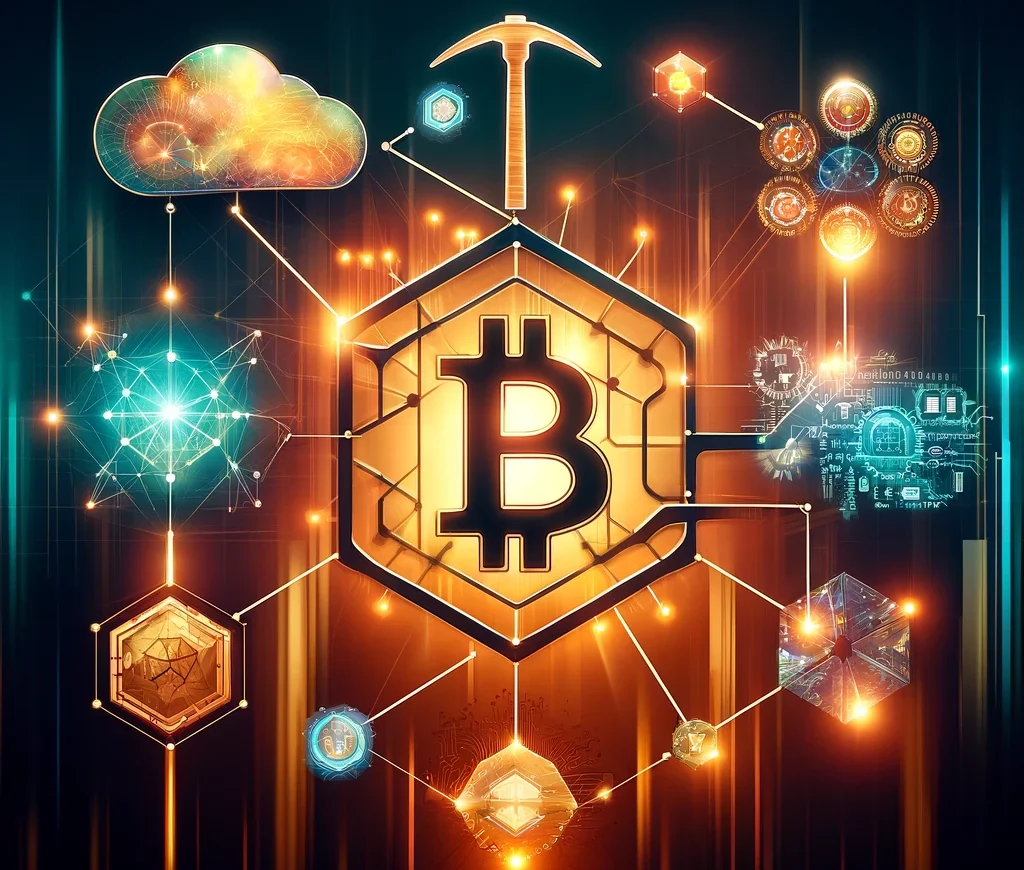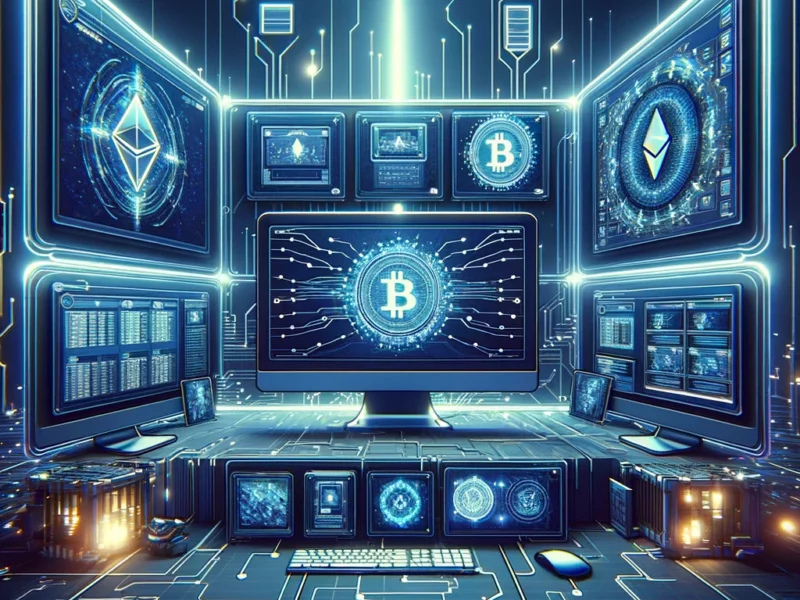Cryptocurrency mining is an important part of the blockchain technology that supports digital currencies like Bitcoin and Ethereum. It is the process by which new coins are introduced into the existing circulating supply and how transactions are confirmed and added to the blockchain.
Understanding the Basics of Cryptocurrency Mining
Cryptocurrency mining is the process of solving complex mathematical problems to validate transactions and add new blocks to the blockchain. Miners use specialized hardware to solve these problems, and in return, they are rewarded with newly minted coins and transaction fees.
The mining process involves compiling recent transactions into blocks and trying to solve a computationally difficult puzzle. The first miner to solve the puzzle gets to place the next block on the blockchain and claim the rewards. The rewards incentivize mining and include both the newly released cryptocurrency and the fees paid by users sending transactions.
The mining process also secures the network and makes sure that transactions are valid. By solving the complex mathematical problems, miners help to prevent double-spending ensuring the blockchain remains tamper-proof.
Hardware and Software Requirements for Mining
To participate in cryptocurrency mining, you will need specialized hardware and software. The most common hardware used for mining is the Application-Specific Integrated Circuit (ASIC) miner. These are specialized chips designed specifically for mining cryptocurrencies like Bitcoin. They are much more efficient and can mine at faster rate than traditional CPUs or GPUs
Some miners use Graphics Processing Units (GPUs) to mine cryptocurrencies like Ethereum. GPUs are less specialized than ASICs but can still provide significant mining power.
To control the mining hardware, you will also need mining software. This software connects your hardware to the blockchain network and allows you to monitor your mining progress and rewards. Some well known mining softwares include CGMiner, BFGMiner, and EasyMiner.
Read also:Does Cryptocurrency Mining Affect the Environment?
The Mining Process in Detail
Now let’s take a closer look at the mining process itself.
When a transaction is made on the blockchain network, it is broadcast to all the nodes in the network. The nodes then validate the transaction to ensure that it is legitimate. Once validated, the transaction is added to a pool of unconfirmed transactions.
Miners then select a group of these unconfirmed transactions and combine them into a block. The block also includes a unique code called a “nonce” and the hash of the previous block in the chain.
The miners then compete to solve a complex mathematical problem that is unique to each block. This problem is designed to be difficult to solve but easy to verify. The difficulty of the problem is adjusted so that, on average, a new block is added to the blockchain every 10 minutes (in the case of Bitcoin).
To solve the problem, miners use their computational power to rapidly generate and test different nonce values. The goal is to find a nonce that, when combined with the contents of the block, produces a hash that meets a certain criteria.
Once a miner finds a solution, they will broadcast it to the network. Other miners then verify the solution and, if it is correct, the block is added to the blockchain and the miner is rewarded with newly minted coins and transaction fees.
The process then starts again with a new set of unconfirmed transactions.
Challenges and Considerations in Cryptocurrency Mining
Cryptocurrency mining can be a rewarding task but it also comes with its own set of challenges and considerations.
One of the biggest challenges is the high energy consumption of mining hardware. ASICs and GPUs require significant amounts of electricity to run, leading to high energy costs for miners. This has led to concerns about the environmental impact of mining and has prompted some miners to seek out renewable energy sources.
Another challenge is the increasing difficulty of mining. As more miners join the network and the computational power increases, the mathematical problems become more difficult to solve. This means that individual miners may have a harder time competing with large mining pools that combine the computational power of many miners.
There are also concerns about the centralization of mining power. As mining has become more competitive, it has led to the rise of large mining pools that control a significant portion of the network’s computational power. This has raised questions about the decentralization and security of blockchain networks.
Despite these challenges, many individuals and organizations continue to see the good in cryptocurrency mining. Some see it as a way to support and secure the blockchain network, while others see it as a potential investment opportunity.
The Future of Cryptocurrency Mining
As blockchain technology develops, so also does cryptocurrency mining. One of the most significant developments in recent years has been the rise of “proof-of-stake” consensus mechanisms as an alternative to the traditional “proof-of-work” model used by Bitcoin and other cryptocurrencies.
Under a proof-of-stake model, instead miners will compete to solve mathematical problems, validators are chosen to create new blocks based on the amount of cryptocurrency they hold and are willing to “stake” as collateral. This model is seen as more energy-efficient and more secure than proof-of-work.
Another development is the emergence of “mining as a service” platforms that allow individuals to rent mining hardware and participate in mining without having to invest in their own hardware. These platforms aim to make mining more accessible and cost-effective for a wider range of participants.
Key takeaways
1. Cryptocurrency mining is the process of solving complex mathematical problems to validate transactions and add new blocks to the blockchain, rewarding miners with newly minted coins and transaction fees.
2. Miners use specialized hardware, such as Application-Specific Integrated Circuits (ASICs) or Graphics Processing Units (GPUs), and software to participate in the mining process.
3. The mining process involves selecting unconfirmed transactions, combining them into a block, and solving a unique mathematical problem to add the block to the blockchain.
4. Challenges in cryptocurrency mining include high energy consumption, increasing difficulty, and concerns about the centralization of mining power.
5. The future of cryptocurrency mining may involve a shift towards proof-of-stake consensus mechanisms and the rise of mining as a service platform.
Frequently Asked Questions
1. What is the difference between proof-of-work and proof-of-stake mining?
Proof-of-work (PoW) mining involves miners competing to solve complex mathematical problems to validate transactions and add new blocks to the blockchain. Proof-of-stake (PoS) mining, on the other hand, selects validators based on the amount of cryptocurrency they hold and are willing to “stake” as collateral, which is considered more energy-efficient and potentially more secure.
2. Can I mine cryptocurrencies using my personal computer?
While it is possible to mine some cryptocurrencies using a personal computer, it is generally not profitable due to the high energy costs and the increasing difficulty of mining. Most successful miners use specialized hardware, such as ASICs or high-end GPUs, to maximize their mining efficiency.
3. How do I choose a cryptocurrency to mine?
When choosing a cryptocurrency to mine, consider factors such as the coin’s market value, the difficulty of mining, the hardware requirements, and the potential for future growth. It’s also essential to research the cryptocurrency’s community, development team, and long-term goals to ensure it aligns with your own objectives.
4. What is a mining pool, and should I join one?
A mining pool is a group of miners who combine their computational power to increase their chances of solving a block and earning rewards. Joining a mining pool can provide a more steady stream of income, as the rewards are shared among the pool members based on their contributed mining power. However, it’s important to research and compare different mining pools before joining one, considering factors such as fees, payout structures, and reputation.
5. How do I calculate the profitability of mining a specific cryptocurrency?
To calculate the profitability of mining a cryptocurrency, you need to consider several factors, including the cost of hardware, electricity costs, the cryptocurrency’s current market value, and the mining difficulty. There are several online mining calculators available that can help you estimate your potential profits based on these variables.
6. What are the risks associated with cryptocurrency mining?
Some risks associated with cryptocurrency mining include market volatility, hardware obsolescence, regulatory uncertainties, and the potential for 51% attacks, where a group of miners control more than 50% of the network’s mining power and can manipulate the blockchain. Additionally, the high energy consumption of mining has led to environmental concerns.
7. How can I stay informed about the latest developments in cryptocurrency mining?
To stay informed about the latest developments in cryptocurrency mining, follow reputable industry news sources, join online communities and forums dedicated to mining and cryptocurrencies, and attend relevant conferences and events. It’s also essential to keep an eye on the development of new mining technologies, such as ASICs and GPUs, and the adoption of new consensus mechanisms like proof-of-stake.










